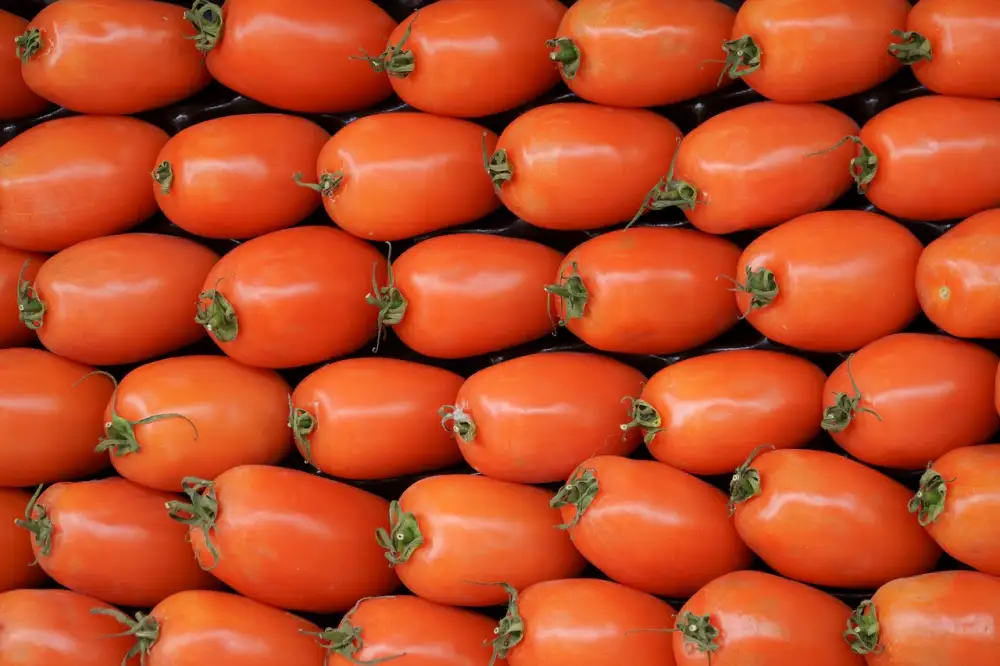Unlock the Richness of Tomato Passata: A Must-Have Ingredient for Food Lovers

Tomato passata, also known as tomato puree or tomato sauce, is a versatile ingredient that adds depth and richness to a variety of dishes. Made from ripe tomatoes that have been cooked down and strained, tomato passata offers a concentrated burst of flavor that enhances the taste of any meal. Whether used as a base for pasta sauces, soups, stews, or even as a topping for pizzas, this vibrant red sauce is a must-have in every food lover's pantry. Its smooth texture and robust taste make it an essential ingredient in Italian cuisine and beyond. Get ready to unlock the richness of tomato passata and embark on a flavorful journey with your favorite dishes.
History and Origins of Tomato Passata
Tomato passata, a staple ingredient in Italian cuisine, has a rich history and fascinating origins. Its roots can be traced back to ancient Rome, where the Romans first began preserving tomatoes by cooking them down into a thick sauce. This sauce was then strained to remove the seeds and skins, resulting in what we now know as tomato passata.
The tradition of making tomato passata was passed down through generations, with each family having their own unique recipe and method of preparation. In Italy, it is common for families to come together during the late summer months to harvest ripe tomatoes and spend hours cooking them into passata.
The popularity of tomato passata spread beyond Italy in the 19th century when Italian immigrants brought their culinary traditions with them to countries like the United States. Today, tomato passata is widely used in various cuisines around the world, but its heart still lies in Italy.
The process of making tomato passata has remained relatively unchanged over the centuries. Ripe tomatoes are washed, blanched in boiling water, and then quickly cooled in ice water. The skins are then peeled off, and the tomatoes are crushed or blended into a smooth puree. This puree is simmered slowly over low heat until it thickens into a rich sauce. Finally, it is strained to remove any remaining seeds or pulp.
The result is a vibrant red sauce with a velvety texture and intense flavor. Tomato passata's versatility makes it an essential ingredient for countless dishes such as pasta sauces, soups, stews, and even pizza toppings. Its deep flavor adds depth and richness to any recipe it is used in.
Beyond its culinary uses, tomato passata also offers numerous health benefits. It is packed with vitamins A and C as well as antioxidants that help boost immunity and promote overall well-being. Additionally, it is low in calories and fat while being high in fiber content.
To preserve tomato passata, it can be stored in sterilized jars or bottles and kept in a cool, dark place. Alternatively, it can be frozen for longer shelf life. It is important to note that once opened, tomato passata should be refrigerated and used within a few days.
With its rich history, versatile uses, and health benefits, tomato passata is truly a must-have ingredient for food lovers. Whether you are a seasoned chef or an amateur cook, unlocking the richness of tomato passata will undoubtedly elevate your culinary creations to new heights.
The Process of Making Tomato Passata
The process of making tomato passata begins with selecting ripe, juicy tomatoes. The tomatoes are then washed and blanched in boiling water to remove the skin easily. Once peeled, the tomatoes are crushed or pureed to create a smooth consistency. The puree is then simmered on low heat for several hours to reduce the liquid content and intensify the flavors. Finally, the passata is strained through a fine-mesh sieve or cheesecloth to remove any seeds or pulp, resulting in a velvety smooth sauce. This traditional method ensures that the passata retains its vibrant color and rich taste, making it a perfect base for various dishes.
Uses of Tomato Passata in Cooking
Tomato passata is a versatile ingredient that can be used in various ways to enhance the flavors of dishes. Its rich and smooth texture makes it perfect for creating delicious sauces, soups, and stews. It can be used as a base for pasta sauces, adding depth and richness to dishes like spaghetti bolognese or lasagna. Tomato passata can also be used as a topping for pizzas, providing a vibrant and tangy flavor. Additionally, it can be added to soups and stews to give them a robust tomato taste. Its versatility extends beyond Italian cuisine - it can be used in Mexican dishes like enchiladas or as a base for Indian curries. The possibilities are endless with tomato passata, making it an essential ingredient for food lovers looking to elevate their cooking game.
Health Benefits of Tomato Passata
Tomato passata not only enhances the taste of dishes, but it also offers several health benefits. Packed with essential nutrients, it is a great source of vitamins A and C, as well as potassium and antioxidants. These nutrients help boost the immune system, promote healthy skin, and improve vision. Tomato passata is also known to have anti-inflammatory properties that can reduce the risk of chronic diseases such as heart disease and certain types of cancer. Additionally, its high lycopene content has been linked to a lower risk of prostate cancer. Incorporating tomato passata into your meals can contribute to a healthier lifestyle while adding a burst of flavor to your dishes.
Tips for Storing and Preserving Tomato Passata
1. Store in airtight containers: Transfer the tomato passata into clean, airtight containers to prevent air exposure and maintain its freshness.
2. Refrigerate or freeze: If you plan to use the tomato passata within a few days, store it in the refrigerator. For longer storage, freeze it in small portions using freezer-safe bags or ice cube trays.
3. Label and date: Always label your containers with the date of preparation to keep track of freshness. This will help you use the oldest passata first.
4. Use proper sterilization techniques: To extend the shelf life of homemade tomato passata, ensure that your jars and lids are properly sterilized before filling them.
5. Keep away from direct sunlight: Store your tomato passata in a cool, dark place to avoid sunlight exposure, which can cause spoilage and loss of flavor.
By following these simple tips, you can enjoy the rich flavors of tomato passata throughout the year while ensuring its quality and taste remain intact.
Popular Recipes Featuring Tomato Passata
1. Classic Marinara Sauce: A staple in Italian cuisine, this sauce is made with tomato passata, garlic, onions, and herbs. It pairs perfectly with pasta or can be used as a base for pizza.
2. Spaghetti Bolognese: This hearty dish combines ground meat, tomato passata, onions, carrots, and celery. Simmered together, it creates a rich and flavorful sauce that coats the spaghetti beautifully.
3. Shakshuka: A Middle Eastern breakfast favorite, this dish features eggs poached in a spicy tomato passata sauce with bell peppers and onions. Serve with crusty bread for a satisfying meal.
4. Chicken Parmesan: Breaded chicken cutlets topped with tomato passata and melted cheese make for a delicious and comforting dish. Serve over pasta or with a side of salad for a complete meal.
5. Ratatouille: This French vegetable stew is made by sautéing eggplant, zucchini, bell peppers, and onions in tomato passata until tender. It's a versatile dish that can be served as a main course or as a side dish.
6. Pizza Margherita: The classic Neapolitan pizza features a thin crust topped with tomato passata, fresh mozzarella cheese, basil leaves, and olive oil. Simple yet bursting with flavor!
These recipes showcase the versatility of tomato passata in various cuisines and dishes. Whether you're craving Italian classics or exploring global flavors, tomato passata adds depth and richness to your culinary creations.
In conclusion, tomato passata is a versatile ingredient that adds depth and richness to a wide range of dishes. Its origins can be traced back to ancient Rome, and its popularity has only grown over the centuries. The process of making tomato passata involves simmering ripe tomatoes and straining them to create a smooth and velvety sauce. This sauce can be used in various ways, from pasta sauces and soups to stews and marinades.
Not only does tomato passata enhance the flavor of dishes, but it also offers numerous health benefits. It is packed with vitamins, minerals, and antioxidants that support overall well-being. Additionally, it is low in calories and fat, making it a great choice for those watching their weight.
To make the most of your tomato passata, it's important to store it properly. Keep it in an airtight container in the refrigerator or freezer to preserve its freshness. When using frozen passata, thaw it in the refrigerator overnight before incorporating it into your recipes.
There are countless recipes that feature tomato passata as a star ingredient. From classic Italian dishes like spaghetti Bolognese and lasagna to international favorites like shakshuka and enchiladas, the possibilities are endless.
In conclusion, tomato passata is an essential pantry staple for food lovers who want to unlock the richness of flavor in their dishes. Its versatility, history, health benefits, and delicious taste make it a must-have ingredient for any culinary explorer. So go ahead and embark on a flavorful journey with tomato passata!
Published: 06. 12. 2023
Category: Food



